The Furniture: Decorating Madness in A Streetcar Named Desire
 Monday, June 6, 2016 at 10:30AM
Monday, June 6, 2016 at 10:30AM "The Furniture" is our weekly series on Production Design. Here's Daniel Walber...

The 70th Tony Awards are in just a few days. I certainly can't be trusted with predictions, but I’ll make one guess. The award for Best Performance by a Leading Actress in a Play probably won’t be split three ways. That sort of near-impossible result has only occurred once, all the way back in 1948. The 2nd Tony Award for Best Actress in a Play was shared by Judith Anderson, Katharine Cornell, and Jessica Tandy. Tandy won for the original broadway production of A Streetcar Named Desire.
Of course, she didn’t get to be in the movie and so we will leave her behind. Elia Kazan’s film of Tennessee Williams’s masterpiece premiered less than two years after its Broadway run ended. Its success was that instant. It won four Oscars, though all but one was for acting. That fourth prize, of course, was for production design. [More...]
The New Orleans house where Stanley (Marlon Brando) and Stella Kowalski (Kim Hunter) live is a delicious blend of Southern decadence and decay. Kazan returns time and again to shots of the building from the outside. It underlines the near-theatrical unity of the action, the dark edifice from which no one can escape the neuroses and machinations of the other characters.
The interior of the apartment is equally memorable, with its tiny rooms and peeling walls. But, for my money, the real triumph of the production design isn’t necessarily the set itself. While the crumbling walls and cramped spaces of the apartment inch toward brutal realism, the decor within counters this feeling by constantly nudging toward the edge of sanity. Through these little details, art director Richard Day and set decorator George James Hopkins crafted among the most complex productions of the 1950s.
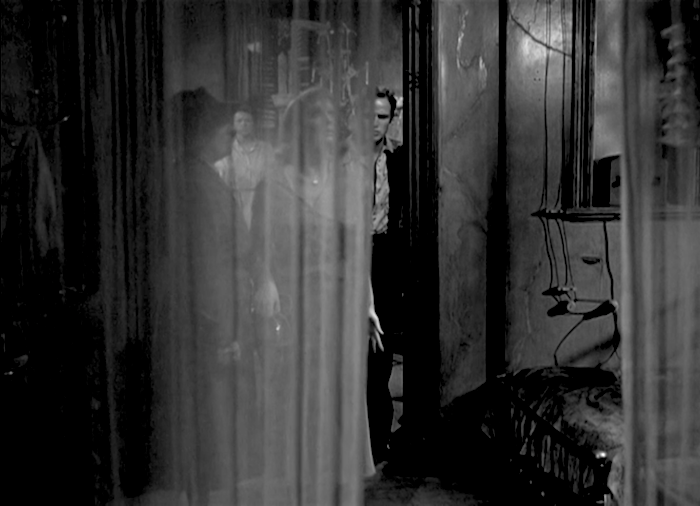
When Blanche DuBois (Vivien Leigh) first arrives, she discovers that she won’t be sleeping in a guest room, but rather on a small bed that is separated from the rest of the apartment by mere curtains. The fabric between her space and the kitchen is translucent, whereas the one bordering Stanley and Stella’s bedroom is patterned and opaque. While the latter allows her some privacy, the former is mostly used to emphasize the looseness of her personal and psychological situation.
There seems to be fabric everywhere in this apartment, displaying an unsettled fluidity that counterbalances the weight of the dirty walls. It's often used to frame the wide variety of objects that occupy the space, commenting on the disarray. Here, for example, is a curtain that gestures at a little white doll in a hat.
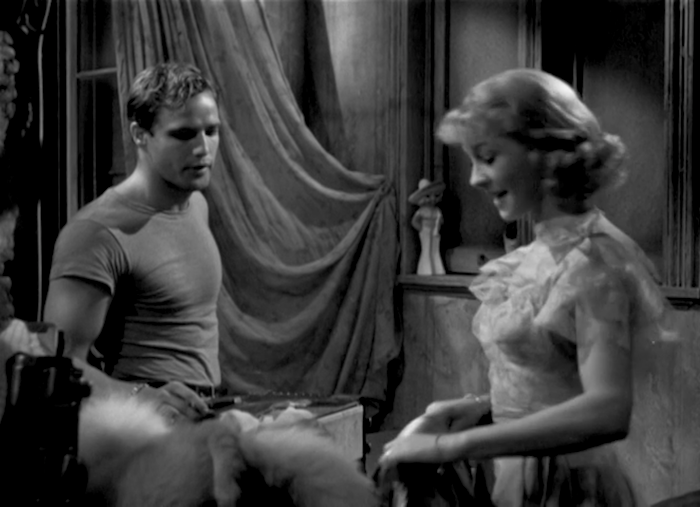
Similar draping draws our eye to a saxophone hanging on Stella and Stanley’s bed, yet another unexpected and idiosyncratic prop. The fact that most of these objects go without comment only furthers their power as little hints of distraction and chaos.
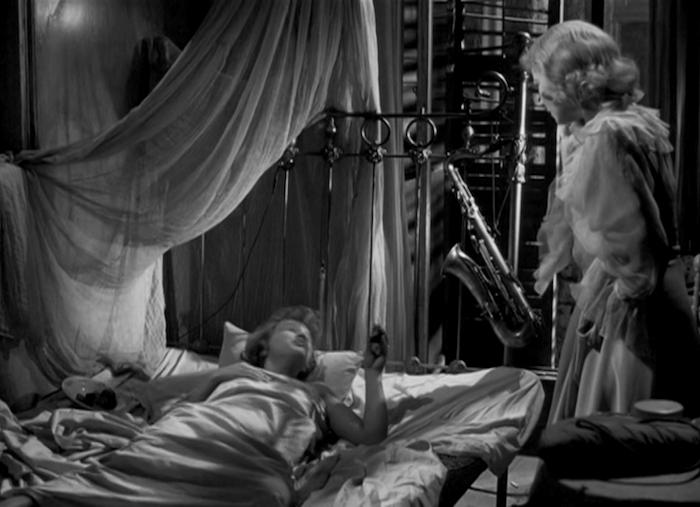
In true Hollywood fashion, the sense of place is also unmoored by Asian objets-d’art. There are printed fans displayed in the kitchen, here positioned just behind Stanley’s head.
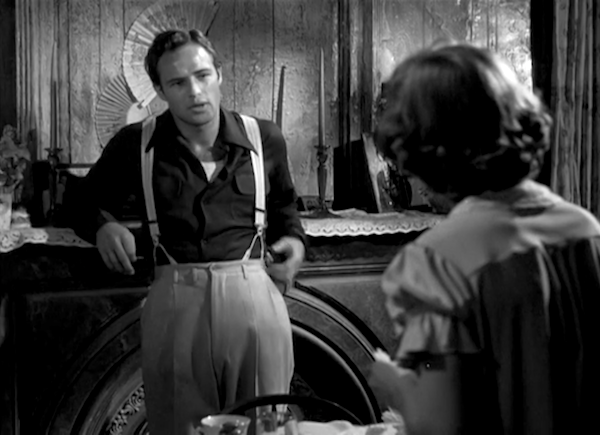
More notable is the paper lantern that Blanche brings home to cover the naked bulb in the bedroom. "We've made enchantment," she says, after it casts its hushed glow. Heavy with metaphor, it is the introduction of her fear of being seen in the bright, unforgiving light of truth. It remains until the very end, when Stanley tears it down and provokes another moment of crisis.
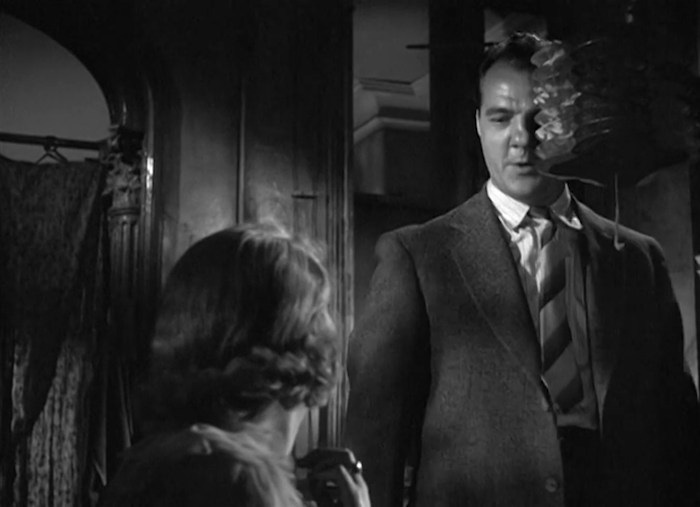
For more on the complicated implications of this particular technique, I cannot highly enough recommend Homay King’s Lost in Translation: Orientalism, Cinema and the Enigmatic Signifier.
But back to the matter at hand. Perhaps the most obvious source of this nebulous atmosphere is the city of New Orleans itself. After all, Blanche is “told to take a streetcar named Desire, and then transfer to one called Cemeteries and ride six blocks and get off at Elysian Fields.” It’s hard to come up with a blunter metaphor than that.
Any hint of the Crescent City’s ornate decay is, therefore, a reminder of this charmingly ridiculous statement of purpose. Think of that iconic shot of Stanley in the courtyard, hollering “Stella!” He bellows up across the ornate metalwork that embellishes the staircase. It’s not just floral, it’s like an iron swamp that crawls up the stairs to strangle everyone in the building with sex and mortality. It's also a perfect consolidation of the set's stark brutality and the enigmatic designs within, the visual dialog that propels the whole film toward madness.
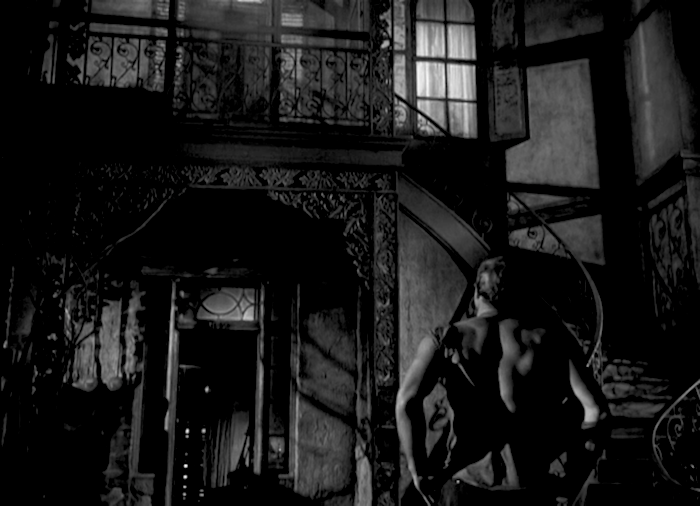
Recently on "The Furniture":
The Witch (2016), Star Wars: The Force Awakens (2015), That Hamilton Woman (1941)
More on A Streetcar Named Desire




Reader Comments (5)
More than any film I can think of Streetcar depicts Southern Gothic. Always loved the set and its shadows, and clearly remember the paper shade……………but never noticed the fabric. What IS that saxophone doing there?
Love these entries.
I just saw the production of Streetcar at St. Ann's Warehouse last week--fantastic! They also used fabric on the smallish set to great effect.
Agree with Leslie19. These "furniture" posts have been great!
What is that saxophone doing there? On the bed? As a stand-in/metaphor for, well, Brando's, er, prowess.
With all due respect to Tandy & Lange, Leigh IS still by far, the definitive Blanche DuBois!
The set is great but the jazzy score really lifts up the decadent, combustible tone of the story. A pity Alex North was snubbed for Best Score (15 noms, Zilch win, one Honorary)
It's New Orleans...the sax was won in a card game!!!!